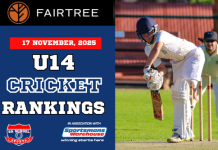by Gary Kirsten
The last two months, I have had the good fortune of working with some of the best ball strikers in the game. It’s really incredible to see the power they display, and even though they all have different styles, I’m always interested to find out what – if anything – is common in their bat swings.
Hardick Pandya searching for the swing to hit sixes at will
Hardik Pandya is easily one of the hardest hitters of a cricket ball I have come across. I’m always grateful to have the small protection net to get behind after I have released the ball when throwing to him – I simply would not have the time to react if the ball was hit back to me!
Throughout this IPL campaign, Hardik has been searching for his swing which allows him to hit powerful sixes at will. Through his new batting position, he has restricted himself and played a more controlled game, rather than the freestyle, swashbuckling ball striking we have all become familiar with at the backend of a 20-over innings.
An Interesting Coaching Dilemma
This has resulted in some interesting conversations between the two of us, with Hardik repeatedly asking what I’ve seen and what my advice would be to help him return to hitting the ball for six with ease.
This became an interesting coaching dilemma. It required some careful consideration and a good process for him to actually feel what he was looking for. For the first time in his career, Hardik is batting in a role which is different to what he’s used to.
It would have been easy to give an opinion on what I could see after watching numerous videos and seeing him bat in the nets, but I was mindful not to jump in too early. I needed to find out more and, most importantly, I needed to help him understand what it felt like when he was striking the ball as he wanted.
So, I went on a fact-finding mission which involved asking a series of questions:
- When you are striking the ball like you want, where do you feel your most power is coming from?
- What do you think is currently restricting you from doing that?
- How will reverting to that old technique affect your game now?
- What feels most natural to you?
The result was a tremendous discussion on his technique. I then asked him what position he’s searching for on release of the delivery which will allow for maximum acceleration of his hands.
After some consideration, his conclusion was less feet movement and a stronger base – as a golfer would do – to generate force from the ground up. His more ‘side on’ stance aimed at playing both sides of the wicket had created less hand acceleration, and he was prioritising placement over power. He also took note of the fact that his power game was more necessary toward the back of the innings, where power would become more important than placement of the ball.
Coaches Governed by Our Own Biases
I really enjoyed the discussion and, at no stage did I feel I was jumping to conclusions or presenting him with information that created confusion. I merely listened and asked questions. In the end, his answers were logical, and I felt the success of the intervention was more the discussion and connection rather than any wholesale changes.
We, as coaches, are governed by our own biases and how we see the game. Often, we are asked to give an opinion or a piece of advice to a player, so we need to be aware of our own interior condition in this process.
Does it make us feel good when a player asks us for advice? Do we feel a sense of authority and power that a player is seeking our counsel and knowledge? Have we set up an environment which lets us dictate the terms of a team and an individual’s progress?
My coaching journey has taught me to be a lot more open-minded. When it comes to coaching, my way or the way I see the game is not necessarily the right way for some players. I might have a view on a young player’s technique, but it is my responsibility to create a variety of avenues for the young player to explore and, ultimately, responsibility for his or her own game development.
Retain an attitude of Curiosity
This is particularly evident when working with teenage players. It would be easy for me to get them to see their games through my eyes, that my way is the only way you can be successful. I have learnt to explore with them, to try to find the balance between what I see and what they feel.
I do this by retaining an attitude of curiosity, by asking many questions about their techniques – the advantages and disadvantages. It takes a little more time and patience, but ultimately the player leaves with clarity and understanding of how their bodies are moving.
I would encourage coaches, particularly those working with younger players, not to default to an easy coaching approach: ‘This is what I see and you must develop your game my way’. But rather, to explore with the player, to provide them with the keys to their own progress. To remain inquisitive and curious.
As a coach, we wear many different hats. We are a teacher, a mentor, a father figure, a team strategist, an organiser, a planner, a team culture specialist and so much more. But most importantly, we work with people who need us to wear these different hats with consideration.
Some players require more of a teaching approach, others require a more father figure or mentor approach. But more times than not, a player wants to feel a connection, to know that you believe in them and that they’re not simply your performance tool. It is our responsibility to understand what role we need to play with every one of the cricketers we coach.






